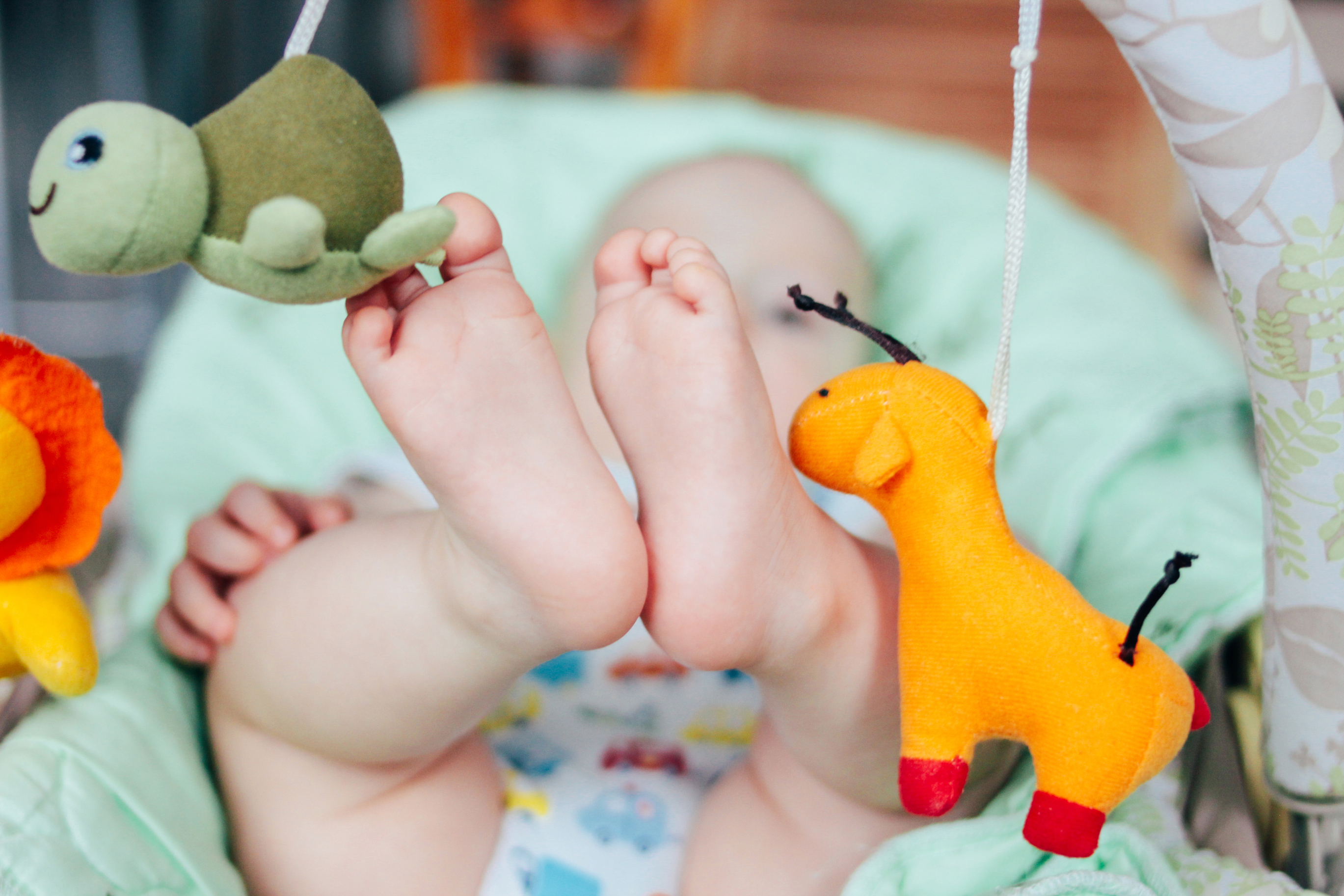
Infants fall. It happens all the time. Advice to parents is filled with reminders to use properly installed car seats to protect your infant in a moving vehicle, or to lay your infant down on her back on a firm surface to avoid sudden infant death. Given these real and pervasive dangers, is it any wonder that there is little attention given to safe sitting?
Consider these facts:
- Though infants can turn their heads from side to side at birth, many infants cannot hold their heads steady until they are about two months old. A steady head is just the first of many skills needed to sit independently!
- The age at which infants achieve various motor skills leading to independent sitting varies.Infants go through a predictable sequence of incremental changes in the way their control their trunk, neck and back muscles, so that they can sit without support by age 7-8 months.
- Premature infants may not reach these milestones until they have achieved an age equal to their chronological age (months after birth) plus the number of weeks they were premature.And while it is helpful to allow your infant to use all his muscles to increase strength by encouraging tummy time while awake, it is not safe to allow him to try those things from an elevated position or without very close supervision.
- Infants may not be able to protect themselves from injury due to a fall for many months.A “parachute reflex” describes the natural tendency to extend the arms to protect yourself from injury when you fall.It can develop as early as 5 months of age, but may not develop until 9-10 months in normal children who are slower to gain motor milestones.While this parachute reflex can protect a child in a fall, it can also lead to excessive loads on an arm or clavicle when an infant falls, putting them at risk for a fracture.
So…about seating…an infant carrier should not be placed on a soft surface such as a sofa. As infants gain strength they can throw themselves to one side and cause the infant carrier to fall. Infants should not be placed in semi-reclining furniture intended for adults such as a papasan chair or bean bag. They can slide and fall. Infant carriers and seats have straps which should be used to keep them safely in their seats, and the seats need to be placed on the floor—not a table, or kitchen counter.
Usually infants are not seriously injured in a fall from an infant carrier or short falls. But repeated or injuries can cause the medical system to question the competence of the caregiver or adequacy of their supervision.
Falls from unsafe sitting can results in broken arms, clavicles or even a fracture to the skull.
One good habit is to survey your infant’s environment routinely looking for unexpected dangers. As your child matures these risks change, based on her developmental skills. Vigilance regarding these risks, and insistence that all caregivers respect those risks, are important habits of healthy parenting!
By Patricia S. Beach, MD
Co-Director, Division of General Academic Pediatrics
Director UTMB ABC Child Safety and Protection Team
Emeritus Scholar, John P. McGovern Academy of Oslerian Medicine
University of Texas Medical Branch (UTMB)
By Maylin Gerardo Lopez, APRN, FNP-C, CA-CP SANE
Pediatric Specialist, Child Safety and Protection Team
University of Texas Medical Branch (UTMB)
Published 2/04/2021
More information about the expected skills for an infant is available here: https://www.healthychildren.org/English/ages-stages/baby/Pages/Movement-Birth-to-Three-Months.aspx
https://www.healthychildren.org/English/ages-stages/baby/Pages/Movement-4-to-7-Months.aspx.
Also see:
UTMB Health Primary Care Pediatrics
AAP Schedule of Well-Child Care Visits & Benefits